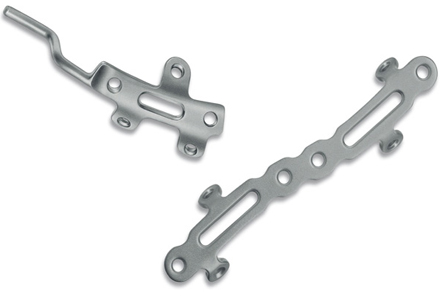Removal Support Implant
Introduction
Implant removal is considered as the most common elective orthopedic procedures performed. As per research, this procedure contributes to about 30 to 35% of all planned orthopedic operations.
Hardware removal is a surgery to take out the devices used to fix the bone. These devices may include metal pins, screws, plates, surgical wires, or bone implants. These types of hardware devices are placed to hold and keep the broken bones aligned together until they heal. Some hardware may be used for a short period of time, while some may be left in place permanently. Hardware removal is usually done because of problems caused by the implant, such as pain or infection. It may also be done if the hardware is causing allergy or bone fracture. Some patients may want them removed because of cancer risk or to avoid security metal detection. Hardware in young children needs to be removed to prevent problems with bone growth.
During hardware removal, the surgeon makes an incision over the same area used when the hardware is placed. After this, the hardware is slowly and carefully separated from nearby tissues to prevent damage. Special instruments are required to loosen and free the hardware from the bone. The wound is closed using stitches and covered with bandages.
Iran ranks among the top 10 countries in orthopedics and Iranian surgeons perform high quality orthopedic surgeries at highly affordable prices

Controversy exists about whether there is any need for routine implant removal. In children, it may be necessary to remove implants early to avoid problems in the growth of skeleton, to prevent bone growth over the implant which may make their later removal technically difficult or impossible, and finally to allow for planned reconstructive surgery after maturation of skeleton (For example, such staged surgical approach is required to treat children with hip dysplasia).
In adults, the indications for implant removal in clinical practice include:
1. Pain at the site of implant
2. Soft tissue irritation
3. Infection and pus formation
4. For resumption of strenuous activities
5. Players of contact sports may demand removal after fracture healing
6. Patient’s will
Many times the intractable pain, hardly explainable local symptoms and discomfort gets resolved quickly after the removal of implant. However, implant removal requires a second surgical procedure at the same site in scarred tissue, and poses a risk for nerve damage and re-fractures.
Sometimes, pain may even worsen after implant removal. Corrosion, systemic release of metals such as nickel, chromium, and cobalt, toxicity, allergy and even carcinogenic potential have been linked to some implants. As yet, none of these adverse effects had convincingly been confirmed or proven.
Orthopedic fixation devices made from titanium alloy are considered as less susceptible to degradation and safe to be retained in the body. However, titanium and aluminum had been traced in serum and hair of some patients after spinal instrumentation.
There is an increasing need for the study of the biological mechanisms and clinical determinants of symptomatic implants.
Although hardware removal is commonly done, it should not be considered a routine procedure. The decision to remove hardware has significant economic implications, which includes the costs of the procedure and possible work time lost for postoperative recovery. Moreover, the clinical indications for implant removal are not well established. There are very few reliable guidelines for implant removal. Implant removal may be challenging and can lead to complications, such as neurovascular injury, re-fracture, or recurrence of deformity. Also, the second surgery to remove the implant may require more operating time than the primary surgery as the anatomical planes are disturbed which can make the exploration of structures difficult. If the implant is being removed for pain relief alone, the results are unpredictable and depend on both the implant type and its anatomic location. Surgeons and patients should be aware of appropriate indications for this procedure and have realistic expectations of the risks and benefits of implant removal.
There is an increasing need for the study of the biological mechanisms and clinical determinants of symptomatic implants. Also, there is need for developing clinical decision guidelines that may help in identifying patients who will benefit most from implant removal.